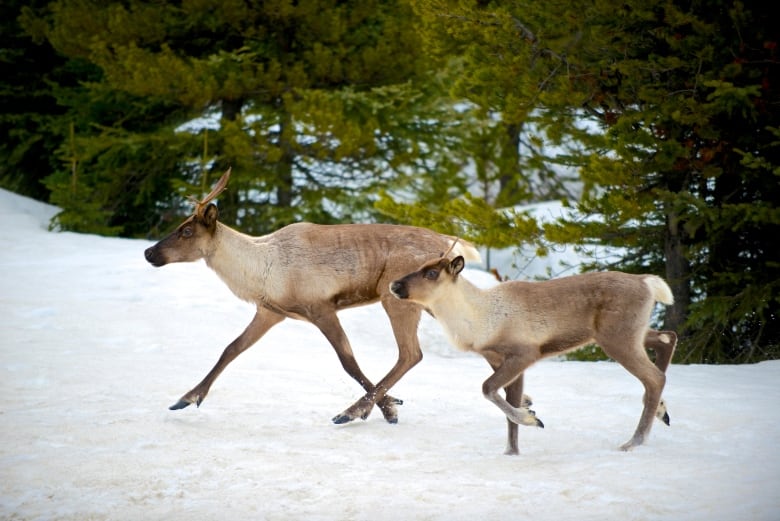By this time, the caribou breeding center of Jasper National Park is almost ready for the pregnant cow to lie down behind its fence, protecting it from and those who eat meat and work to replenish the farm reduce livestock.
This summer’s wildfires have other ideas.
“We are still looking at putting together a recovery plan,” said Jean-Francois Bisaillon, a caribou expert.
Not only did the fire destroy Jasper’s much-loved rural homes and mountains, it also killed plans for Canada’s first captive caribou sanctuary.
Parks Canada is building a $40 million facility that will house up to 40 women and five men permanently in a well-managed and monitored area of about one square kilometer surrounded by a fire park. . The company suggests that captive breeding could produce enough bulls each year to bring Jasper’s herd to sustainable levels within a decade.
One of the three herds in the camp had already left and the others were down to a few animals.
But before that work can resume, Parks Canada must assess the effects of the wildfires, which were out of control until earlier this month.
Almost all of the forest within the site that would have been used for caribou habitat was at least partially burned. About a quarter of its walls are consumed, as is a good portion of slat fencing. Almost all of the caribou feeders were burned and electrical equipment was destroyed.
Buildings such as barns and office warehouses did nothing.
Even so, Bisaillon said that Christmas will still be the end of the birth.
“We’re still planning to do a full maternity ward, just a few weeks late,” he said.
Bisaillon said many of the damaged buildings speak volumes for the planning and insulation that went into their design.
“The challenge we face now is to make sure the habitat conditions are still good enough to welcome our first caribou in the winter. We are working hard to figure out what to do in terms of recovery. trash.”
The animals are constantly provided with food and water, so they do not have to rely on natural exploration.
Trees, from saplings to mature trees, are planted to provide cover and shade. Seeds from native plants are planted to restore ground cover.

“You don’t want caribou living in mud and dirt,” Bisaillon said.
The best news is that some weeds are coming back.
“If we have a warm fall and a little rain, there’s a good chance a lot of grass will grow back before winter.”
Lessons have been learned. Escape routes are now being built in the center so the caribou can escape if they are threatened by another fire.
Conservationists around the world are watching.
Preservatives have long been used for other species, especially birds. It is not used for caribou, which, due to their specific habitat needs and their tendency to interact with people and problems such as deforestation and energy development, is considered one of the conservation challenges. the strongest in the continent.
“We’re getting a lot of interest in this program,” Bisaillon said. “He’s running.
“We are paving the way for new tools that can be used for many types,” said Bisaillon. “If we want to be successful in the recovery of endangered species, we need to use many tools.”
With a little luck, Bisaillon said the center could meet its original timeline.
“We are very optimistic, even though we suffered.”
#Wildfires #lead #success #captive #caribou #breeding #program #CBC #news